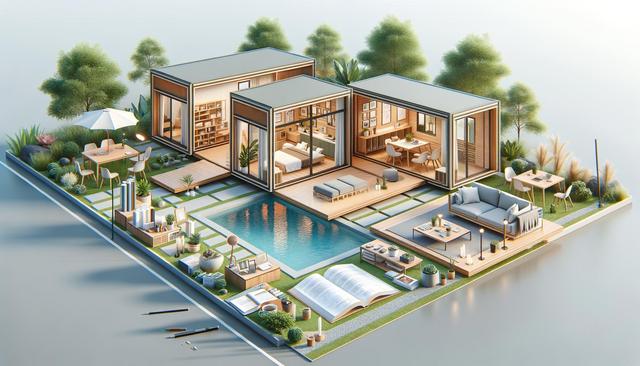What Are Modular Homes?
Modular homes are prefabricated structures built in sections off-site and then assembled on location. Unlike traditional stick-built homes, which are constructed entirely on-site, modular homes leverage controlled factory environments to improve precision, reduce waste, and speed up construction timelines. This method allows for consistent quality and greater flexibility in design. An increasing number of homeowners are turning to modular solutions to rethink their living spaces, with an eye toward sustainability and efficiency.
Steel Modular Construction plays a prominent role in this shift, offering durable and resilient frame options that perform well in a wide range of climates. These structures are particularly appealing in areas prone to extreme weather, as steel provides enhanced stability and resistance to fire, pests, and moisture. Paired with modern design techniques, these homes are not only practical but also visually appealing.
Advantages of Modular Living
Choosing modular construction comes with a variety of benefits that go beyond the initial convenience of faster build times. These advantages include:
- Reduced construction costs due to bulk material purchasing and less on-site labor
- Environmentally-friendly practices through reduced waste and energy-efficient designs
- Customizable layouts that allow homeowners to tailor spaces to their needs
- Improved quality control thanks to factory-based assembly processes
When exploring Modular Home Pictures and Prices, prospective buyers often find that these homes can offer competitive value compared to traditional homes, especially when considering long-term savings in maintenance and energy. The transparency in pricing and the ability to view pre-designed models make the planning process more manageable and less stressful for buyers.
Innovations in Modular Construction Design
Modular Construction Design has evolved significantly, embracing contemporary aesthetics and cutting-edge technologies. Today’s modular homes can feature open-concept living areas, energy-efficient windows, smart home systems, and sustainable materials. Architects and engineers are continuously rethinking how to integrate form and function in compact, flexible spaces.
Design trends include:
- Minimalist interiors with multi-functional furniture
- Green roofs and solar panel integration
- Expandable layouts that allow future additions
- Natural lighting and ventilation optimization
These innovations support a growing demand for homes that reflect modern lifestyles while maintaining a reduced environmental footprint. As urban areas become more congested, modular homes offer a scalable solution for efficient and aesthetic residential development.
The Role of Steel in Modular Construction
Steel Modular Construction has become increasingly popular due to its robustness and adaptability. Steel offers a lightweight yet strong framework that contributes to faster assembly and long-term durability. It is particularly advantageous in multi-level modular projects, where structural integrity is crucial.
Steel Modular Construction Companies are investing in technologies and processes that streamline manufacturing and improve design flexibility. These companies often provide:
- Pre-engineered building modules tailored to specific site conditions
- Custom fabrication options for unique architectural needs
- Comprehensive support from design to installation
The use of steel also aligns with sustainability goals, as it is recyclable and reduces the environmental impact of construction. For developers and homeowners alike, steel offers a reliable and efficient path to modern, modular living.
Planning and Budgeting for a Modular Home
One of the key concerns for anyone considering a modular home is understanding the costs involved and how to plan effectively. Modular Home Pictures and Prices available through builders and online platforms provide a helpful starting point for determining what’s possible within a given budget. Pricing can vary depending on size, materials, customization, and location.
When budgeting for a modular home, consider the following:
- Land purchase and preparation costs
- Permits and local zoning regulations
- Transportation and installation fees
- Interior finish selections and upgrades
Working with experienced Steel Modular Construction Companies can simplify this process, as many offer package deals that include design, fabrication, and installation. Transparent pricing models and modular construction design tools enable clients to make informed decisions without unexpected costs, making modular homes an increasingly practical choice for long-term living solutions.
Conclusion: A New Perspective on Residential Living
Modular homes are transforming how we think about residential spaces. With advancements in Steel Modular Construction, enhanced Modular Construction Design, and accessible Modular Home Pictures and Prices, this approach offers a compelling option for modern dwellers. Whether you’re looking for a primary residence, a guest house, or a sustainable vacation retreat, modular homes provide flexibility, quality, and value. As more people seek efficient and adaptable living environments, modular building continues to pave the way for future-ready housing solutions.




Leave a Reply